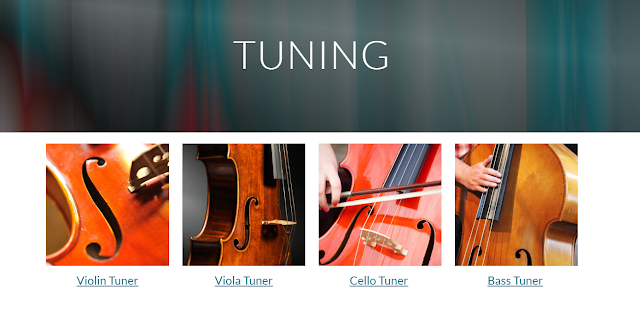'MINDFUL PRACTICE WEEK!'
I think we all get stuck on auto-pilot sometimes. Sometimes I zone out on my drive to work and I don't remember stopping at stop lights. I'm sure I do stop, but I'm not always actively allowing my brain to pay attention to every detail during my drive. I think I sometimes get stuck on auto-pilot at work, too. I run my rehearsals with fast pacing in much the same style every day. I target what to rehearse and quicky go about fixing things. A couple weeks ago, I noticed I was fixing the exact same passages in our music every single day. I know students need repitition, but at what point should it stick? I realized I needed to change the way I was running my rehearsals. I had been thinking for my students...telling what how and what to fix. A shift was needed to help students become more accountable.
MINDFUL VIDEOS
To begin my rehearsal transformation, I showed a couple Brain Games clips to help students learn the idea of paying attention and noticing details:
To keep with the mindfulness theme, I showed a short video clip at the start of each reheasal. This reminded students to be mindful during rehearsals. I used about 20-30 seconds of this video (carefully screen this one become showing students). It's amazing to watch this guy sneak hot-dogs into people's pocket's without them noticing:
MINDFUL GAMES
Poetry for Neanderthals is a fun game for teaching mindfulness. I bought the actual game and we played it as a class for about 5 minutes. It takes a lot of mindfulness to play the game..it's a lot like Taboo...you have to get your team to guess a word on a card, but you're only allowed to give hints that are one syllable. If you say a word with more than one syllable, someone gets to hit you on the head with an inflatable caveman club. It's pretty hilarious. It makes you think really carefully about how and what you say. Students loved this game, so I made my own cards with orchestra terms and words from our concert music to play an 'orchestra version'.
In my beginning class we played a game I created called TWO-WORD rehearsals. I told students that I had to run the entire class only being able to say 2 words at a time. No other talk...no other explanations. Students who had comments or questons were only allowed to say 2 words. It made me really think about what to say and how to say it. I couldn't count off '1...2 ready go' to start the group, so I used conducting motions to start them and they followed like pros! The rehearsal was quiet, focused, efficient, and very mindful. It's more fun for students if they play along and try to ask questions or make comments during the rehearsal.
MINDFUL READING/RESPONDING
During the week, students completed an assignment in Canvas where they read an article and summarized what they learned. It was really interesting to read their responses. I learned a lot about how I needed to change my rehearsals to encompass a mindfulness approach. I highly recommend you read this article, too: https://bulletproofmusician.com/how-many-hours-a-day-should-you-practice/
ASK QUESTIONS
The key to transforming my rehearsals was to ask mindfulness questions. These questions changed depending on what we were practicing, but here are some examples:
1. During our scale, was your F# in tune?
2. Did you use your whole bow the entire time?
3. Did you play every slur?
4. Did your eighth notes match your stand partner's notes?
5. Did you play spiccato at the balance point?
ETC....so many possible questions - it all depends on what you want students to become aware of.
Students responded YES by giving me a thumbs up, NO a thumbs down, or I DIDN'T NOTICE with a flat hand. I explained to students that a 'yes' or 'no' answer is great - it means they are mindful. The 'I don't know' response means there is no mindfulness/awareness.
After rehearsing this way for a few days, I noticed students were taking way more responsibility for their playing. We fixed things FASTER and EASIER because students were doing it themselves. I feel like I didn't have to work as hard to help them make progress. When I needed to stop to rehearse a passage, I tried to ask a mindfulness question instead of just telling them what to do. Students were more engaged and worked so hard!






















































